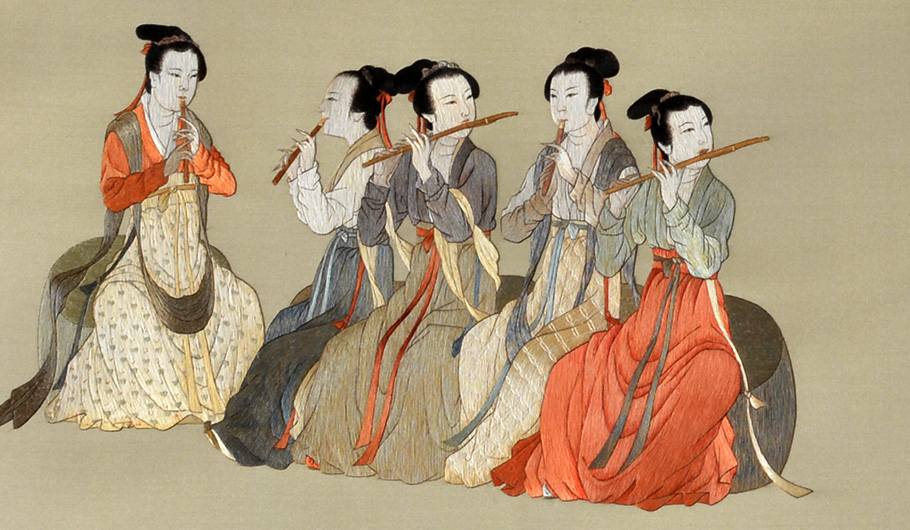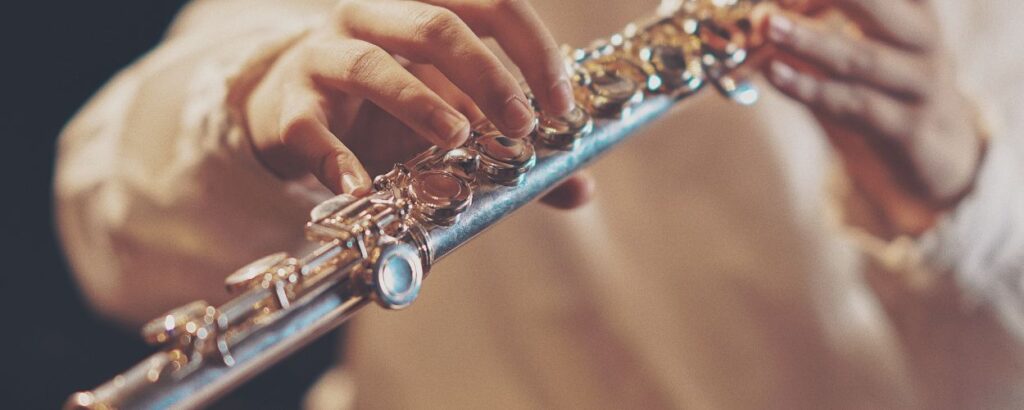The flute is more than just a musical instrument; it embodies a rich tapestry of cultural expression, history, and creativity. From its ancient beginnings to contemporary forms, the flute has evolved while remaining true to its essence—creating melodious sounds that resonate with listeners’ souls. This exploration delves into the multifaceted significance of the flute, examining its definition, historical context, cultural relevance, diverse types, design evolution, and educational impact.
The History and Evolution of the Flute
Exploring the historical context of the flute reveals its extensive journey across time and geography. Dating back thousands of years, the flute has been present in numerous civilizations, each contributing their unique adaptations and interpretations.
Early Origins and Traditional Uses

The earliest flutes date back to prehistoric times, with archeological findings in regions such as Europe, Asia, and the Americas suggesting they were crafted from animal bones and hollow reeds. In these early instances, the flute served not merely as a musical device but also as a tool for social cohesion and ritualistic practices.
Ancient Egyptians, for example, used flutes in religious ceremonies, believing that their melodies could appease gods and attract blessings. Similarly, in the Chinese dynasties, bamboo flutes played a pivotal role in cultural celebrations and artistic expressions. This intertwining of music and spirituality set the foundation for the flute’s ongoing significance.
The Renaissance and Baroque Influence
The Renaissance period marked a renewed interest in musical innovation, but the flute remained relatively simple during this era. It was not until the Baroque period that significant advancements were made, particularly with the development of the traverso—a one-keyed wooden flute that produced warm, rich tones. The traverso highlighted the evolving artistry associated with the instrument, as it became a favorite among both composers and performers. During this time, composers like Johann Sebastian Bach and Wolfgang Amadeus Mozart showcased the flute in their works, elevating its status in orchestral settings.
Industrial Advancements and Modernization
The progression of the flute did not halt with the Baroque era. As globalization gained momentum in the 19th and 20th centuries, so did the exchange of musical ideas and practices. One of the most revolutionary developments came in 1832 when Theobald Boehm introduced the Boehm flute, a metal flute with a redesigned key system that significantly improved intonation, dynamic control, and playability. This transformation allowed for enhanced projection and precision, making the modern flute a staple in orchestras and solo performances.
Additionally, jazz and pop influences began to permeate traditional boundaries, leading to the emergence of innovative flute techniques and styles. Musicians explored new genres, incorporating the flute into rock and electronic music, thereby redefining its cultural identity.
Flute Design and Varieties
The design of the flute has undergone significant transformations throughout its history. Early iterations consisted of simple tubes fashioned from natural materials, while modern models are products of advanced engineering, embodying the intersection of art and technology. Additionally, flutes come in a wide variety of shapes and sizes, each accommodating a wide range of musical styles and traditions. Understanding these differences illuminates how the flute adapts to various cultures and reflects their unique stories.
Early Designs and Materials
Early flutes were predominantly made from wood, bone, or bamboo. These rudimentary designs had limited notes and tonal ranges, but they laid a foundation for the instrument’s future development. Musicians relied heavily on breath control and finger positioning to unlock varied pitches, instilling a deep connection with the instrument.
As cultural demands grew, so did the need for innovation. Artisans began experimenting with different materials, resulting in the creation of flutes with improved sound quality and playability. The transition to metal flutes in the 19th century marked a significant turning point, enabling musicians to achieve greater volume and expressiveness.
Types and Varieties of the Flutes

The concert flute emerges as a quintessential representation of Western classical music. Typically made of silver or gold, this flute shines in orchestral settings, boasting remarkable versatility. Its design allows for precise intonation and a bright, full-bodied sound that resonates beautifully in large ensembles. The piccolo is also frequently featured in orchestras, with its higher pitch and agile character making it ideal for bright, cheerful melodies. Other variants include the alto and bass flutes, which provide depth and richness to harmonic structures.
Contrasting sharply with the metal concert flute, wooden flutes such as the dizi and bansuri are essential to traditional music. The dizi, commonly found in Chinese folk music, possesses a warm timbre that evokes deep emotion. Its intricate fingerings allow for melodic ornamentation, making it indispensable in solo performances. Similarly, the bansuri holds immense significance in Indian classical music. Crafted from bamboo, the bansuri generates a soft, airy tone that complements vocalists and other traditional instruments. This flute’s incorporation into devotional music highlights its role in fostering spiritual connection and reverence.
Contemporary Innovations in Flute Design
In contemporary times, flute design incorporates cutting-edge technology to meet the needs of today’s musicians. Advanced manufacturing techniques have led to improvements in key mechanisms, allowing for smoother action and enhanced response.
Customizable features have also become commonplace, with players able to select options tailored to their individual preferences. From the choice of materials to the size of the embouchure hole—the mouthpiece opening—or even key placement, contemporary flutes offer unprecedented personalization opportunities, inviting musicians to explore their unique artistry.
Future Trends in Flute Development
Looking ahead, the future of flute design appears promising. Innovations in materials science may yield even lighter and more durable flutes, enhancing performance ease. Additionally, advancements in digital technology have paved the way for electronic flutes, incorporating electronic sensors that allow for real-time sound manipulation.
Such developments invite contemplation about the enduring nature of this ancient instrument. While the fundamental concept of the flute remains unchanged, the potential for continued evolution demonstrates the dynamic relationship between tradition and modernity.
The Cultural Significance of the Flute
To fully appreciate the flute, one must recognize its cultural significance across diverse traditions. The interplay between sound and culture invites inquiry into how music fosters connection, understanding, and healing.
Sacred and Meditative Roles of the Flute

In many Indigenous cultures, the flute holds a sacred position. Certain Native American traditions incorporate the flute in healing rituals and storytelling sessions, where its melodies serve as a bridge between the tangible and intangible realms. The soothing sound of the flute resonates deeply within participants, evoking emotions that encourage introspection and connection with nature.
Beyond Indigenous traditions, flutes are also prominent in religious and spiritual practices across different cultures. In Hinduism, the bansuri is associated with Lord Krishna, symbolizing divine love and devotion. Similarly, in Buddhist traditions, the flute’s soft and ethereal tones are often linked to meditation and inner peace. The instrument’s ability to produce gentle, flowing melodies makes it an ideal medium for fostering tranquility and mindfulness.
Celebratory Functions in Cultural Festivals

Flute music often plays a central role in cultural festivities around the world. Whether during traditional ceremonies, weddings, or harvest celebrations, the flute’s jubilant melodies evoke joy and unity among participants. For instance, in Japan, the shinobue—a traditional transverse bamboo flute—is prominently featured in festivals such as the Gion Matsuri and Awa Odori, adding a vibrant and dynamic element to the parades.
These celebrations showcase the flute’s ability to adapt to local customs and storytelling traditions. The instrument becomes a vehicle for sharing narratives, preserving heritage, and fostering communal bonds. Through collective participation, the flute invites individuals to immerse themselves in cultural legacies, enhancing their sense of belonging.
The Flute as a Symbol of Identity
The diversity of flute styles—in terms of construction, playing techniques, and melodic structures—reflects the unique identities of various cultural groups. This variability invites reflection on how instruments can embody the essence of a community or civilization.
For example, the pan flute of South America, with its multiple pipes of varying lengths, creates rich, layered harmonies. In contrast, the ney of the Middle East, a simple end-blown flute, produces a breathy and deeply expressive sound. Meanwhile, the shakuhachi of Japan, made of bamboo with a distinct notched mouthpiece, is renowned for its meditative and fluid tones.
These variations in flute construction reflect the diverse ways in which different societies shape their musical identities. Each region represents distinct musical characteristics, mirroring the complexities of language and identity. The flute thus becomes a crucial instrument for expressing cultural pride and resilience.
The Role of the Flute in Contemporary Culture
As societies evolve, so does the role of the flute within them. Beyond cultural practices and concert performances, the therapeutic potential of the flute is widely recognized. Music therapy programs increasingly incorporate the flute to assist individuals dealing with trauma, anxiety, and emotional challenges. Research has been associated with flute music reducing stress levels and promoting relaxation, further reinforcing its role as a tool for well-being.
Moreover, the rise of technology has transformed the way we experience flute music. Digital platforms allow for unprecedented access to recordings, tutorials, and performances, inviting individuals to explore the instrument’s rich legacy. The flute, once confined to specific communities, now occupies a global space—a testament to its enduring appeal.
Educational Aspects: Learning the Flute

Engaging with the flute provides profound educational benefits, fostering creativity, cognitive skills, emotional intelligence, and a lifelong appreciation for the arts. As access to music education expands, the flute emerges as a gateway to exploring the world of sound.
Introducing Children to the Flute
Programs like Carnegie Hall’s Link Up offer young students the opportunity to learn about orchestral instruments, including the flute, through interactive activities and live performances. These initiatives help children develop foundational musical skills while nurturing creativity and self-expression.
Learning the flute encourages discipline, patience, and perseverance. As students navigate the complexities of breath control, fingerings, and rhythm, they cultivate important life skills that extend beyond the realm of music. These lessons transcend the classroom, shaping individuals equipped for success in various aspects of life.
Community Engagement and Collaboration
Flute education often extends beyond individual practice to encompass community engagement and collaboration. Youth orchestra programs, such as El Sistema, provide students from diverse backgrounds with opportunities to learn and perform in ensembles, fostering camaraderie, teamwork, and a sense of belonging.
Additionally, community performances provide invaluable opportunities for young musicians to showcase their talents. The confidence gained through public performances nurtures a sense of accomplishment and empowers students to embrace their musical identities.
Lifelong Learning and Exploration
The flute offers endless opportunities for lifelong learning and exploration. Even accomplished musicians, such as Sir James Galway, continue to refine their techniques and explore new musical styles, demonstrating that mastery is an ongoing journey.
Moreover, digital platforms like The Flute Channel and Online Flute Academy provide aspiring flutists with access to instructional videos, masterclasses, and performance analyses. These resources make high-quality music education available to learners of all ages and backgrounds, reinforcing the notion that musical exploration knows no bounds.
Conclusion

In essence, the flute symbolizes much more than a mere instrument; it encapsulates a profound journey through culture, history, and human emotion. Its ability to adapt and thrive across centuries speaks volumes about the universal language of music.
As we navigate the intricate interplay between tradition and innovation, we witness the enduring legacy of the flute, inviting future generations to explore its enchanting melodies. The flute stands as a testament to humanity’s quest for expression, connection, and beauty, reminding us of the power that lies within sound and the stories it conveys.
✉️ Stay Connected — Subscribe for Weekly Updates
Discover timeless stories, practical wisdom, and beautiful culture — delivered straight to your inbox.
*We only share valuable insights — no spam, ever.






